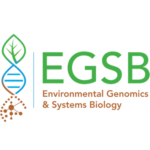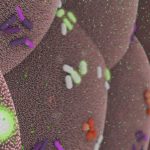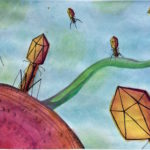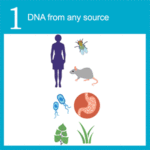As conventional antibiotics continue to lose effectiveness against evolving pathogens, scientists are keen to employ the bacteria-killing techniques perfected by bacteriophages (phages), the viruses that infect bacteria. One major challenge is the difficulty of studying individual phage proteins and determining precisely how the virus wields these tools to kill their host bacteria. A team of researchers from Berkeley Lab, UC Berkeley, and Texas A&M University worked together on a high-throughput genetic screen to identify which part of the bacteria the phages were targeting.
Comparative Functional Genomics Department Leadership Change
Environmental Genomics and Systems Biology Division Director Susannah Tringe announced a change in leadership of the Comparative and Functional Genomics (CFG) Department, effective January 4, 2022. Diane Dickel is stepping down as the Department Head; Adam Deutschbauer has agreed to take on the role.
New Protein Functions from Beneficial Human Gut Bacterium
Researchers in the Environmental Genomics and Systems Biology (EGSB) and Biological Systems and Engineering (BSE) Divisions at Berkeley Lab employed a large-scale functional genomics approach to systematically characterize Bacteroides thetaiotaomicron, a beneficial bacterium prevalent in the human gut. They performed hundreds of genome-wide fitness assays and identified new functions for 40 proteins, including antibiotic tolerance, polysaccharide degradation, and colonization of the GI tract in germ-free mice.
Cataloging Nature’s Hidden Arsenal: Viruses that Infect Bacteria
Viruses that infect bacteria, or phages, are continually evolving ways to target and exploit their specific hosts. Their bacterial hosts, in turn, are continually evolving means to evade the phages. These perpetual battles for survival yield incredibly diverse molecular arsenals that researchers are itching to study, yet doing so can be tedious and labor-intensive.
A team led by Berkeley Lab scientists has developed an efficient and inexpensive new method to gain insight into these defensive strategies. They reported in PLOS Biology that a combination of three recently developed techniques can reveal which bacterial receptors phages exploit to infect the cell, as well as what cellular mechanisms the bacteria use to respond to a phage infection.
Dub-seq Flagship Paper Published in Nature Communications
Dual barcoded shotgun expression library sequencing, or Dub-seq, is a novel high-throughput method for discovering gene function in microbes under various environmental conditions. It was developed by scientists in the Environmental Genomics and Systems Biology (EGSB) Division under the aegis of the Ecosystems and Networks Integrated with Genes and Molecular Assemblies (ENIGMA) program. In a seminal paper published January 18 in Nature Communications, the Dub-seq team presented details of the technique and proof-of-concept work showing that the approach is reproducible, economical, scalable, and identifies both known and novel gene functions.
Was this page useful?








